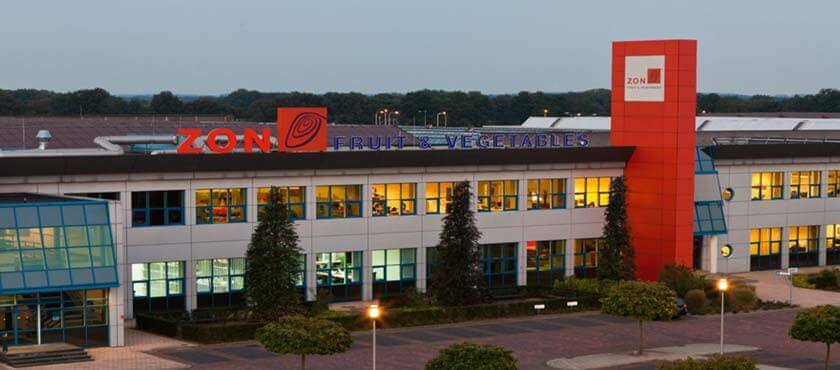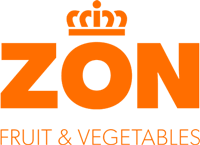ZON FRUIT & VEGETABLES RAISES THE BAR FOR GS1 COMPLIANCE
Data quality and consistency are hard to achieve when dealing with natural products. As a result many fresh fruit and vegetable suppliers just leave the default values in the item attributes when they publish their products on the Global Data Synchronization Network (GDSN).
ZON fruit & vegetables, based in the Netherlands, went beyond this type of superficial GS1 compliance and is the first in its sector to not only fill all item attributes with real values, but to also close the entire loop from GDSN publication to EDI invoicing. Using Data Sync Direct, a solution from the LANSA organization, ZON is implementing its new procedures with a well known Dutch grocery retail chain via the GS1 DAS data pool.
Raising the bar for other players in the agriculture industry, ZON’s unambiguous data quality helps to minimize misunderstandings about products through the entire chain and allows retailers to better manage transportation requirements and shelf space.
- The Challenge
- Sharpening up GS1 Standards
- Easier to find, transport and shelf
- Conclusion
- Company and System Information
The Challenge

ZON is one of the largest food horticultural co-operatives in Europe. With its roots going back to 1915, and after various mergers and structural changes, ZON has developed into an international sales organization and active mediator in the chain from producer to customer. ZON offers cooled storage, transport, cross-docking and other logistics services from its two distribution centers. ZON’s real-estate arm owns and operates ‘Fresh Park Venlo’, a business park where over 130 fresh food companies – such as growers, traders, transport and packing companies – rent facilities from ZON.
ZON’s sales division uses a range of sales instruments to sell its growers’ products quickly and efficiently. The auction, traditionally in a hall or over the Internet, is one of these instruments. In addition, ZON offers contracts on a weekly, monthly or seasonal basis where parties commit to a predetermined product volume against a fixed price. Last but not least ZON uses telephone sales and mediation, usually to move products on short notice.
All logistics and financial transactions related to the delivery of products by growers, warehouse movements and transport to customers, are handled by a heavily customized version of USVA, an IBM i-based auction administration system, complemented by in-house developed systems for contracts, mediation and various on-line facilities provided to customers and growers.
Michèl Thewessen, Manager ICT at ZON, explains, “We are a customer focused organization, which is reflected in our ICT systems. We have fine tuned these systems over the years to serve our auction customers, who are mostly wholesale traders. We will continue to improve our service to them, but through our contracts and mediation sales, we now also cater for a growing number of retailers.”
“The retail industry has many additional requirements. It is a market we are keen to develop and several of our recent projects have been focused on meeting retailers’ needs. GS1 is a recent example of such a project.”
ZON has been GS1 certified for several years, but none of its retail customers asked for strict implementation. GDSN publication happened only just before invoicing, instead of keeping the assortment of published items continuously up-to-date. Also, 50 of the 70 required item attributes were filled with default values. This allowed ZON to get started with GS1 DAS (the GDSN-certified data pool for the Netherlands), but it hardly guaranteed data quality.
The trigger to improve came when a leading retail group asked ZON for EDI invoicing. “Initially their focus was on invoice related EDI traffic only and not on the processes that precede invoicing,” explains Thewessen. “However, one of the retailers within the group saw the project as an opportunity to close the loop and improve the entire process, from GDSN publication to EDI notifications and invoicing. We were keen to prove to the retail world that we can be a front runner in meeting their needs and saw the GS1 and EDI project as an opportunity to do so.”
It was an opportunity to improve the entire process, from GDSN publication to EDI notifications and invoicing.
Sharpening up GS1 Standards
ZON selected Data Sync Direct, a combined Product Information Manager (PIM) system and Global Data Synchronization Network (GDSN) solution, designed to cater to the needs of demand and supply-side implementations. A major reason to select Data Sync Direct was its ability to integrate tightly with ZON’s ERP system, but also the fact it could easily be coupled to another ERP system, if that need arose in the future.
Thewessen explains “The technical implementation was done in two days, including installation, integration with our ERP and communication with GS1 DAS. It basically worked out of the box. The process of collecting information for the item attributes that had been missing and the discussions about what rules should apply to those attributes, was far more time consuming.”
As an example of one of those discussions, Thewessen mentions the issues a tray of cauliflowers raised. Should you express the consumer’s unit as a single cauliflower or, as some retailers prefer, express it in grams of cauliflower? And what are the measurements and weight of an average cauliflower, or a whole tray of them, since both depend on the way the stalks are cut? Another example was the definition of rentable pool-pallets, quite common in the industry, but there were no suitable attributes available to describe them.
ZON went with these types of questions to Frug I Com, an alliance of organizations in the fruit and vegetable chain, whose mission is to optimize information exchange between parties in the chain, by establishing standards for labeling and electronic data exchange. ZON also went with its questions and suggestions to GS1 Netherlands, who assigned a panel of experts to sharpen up the GS1 standards for data quality in the fruit & vegetable industry. In effect ZON helped to establish some of these standards, which have meanwhile been officially communicated to other parties in the industry.
“Except for the long time we spent on collecting information to define the item attributes and discussions on that topic, the rest of the project went smoothly. Integration with our ERP was easy and Data Sync Direct’s user interface is productive. We are already synchronizing part of our item assortment with the first retailer and are in discussion with other retailers.” says Thewessen.
The technical implementation was done in two days, collecting information for the item attributes was more time consuming.

Easier to find, transport and shelf
Wil Westerburger, Operational Manager at ZON, explains “Key to expanding our share in the retail market is to differentiate ourselves. Product quality, price and innovation remain most important, but you also need to differentiate yourself in the way you offer your products and conduct your business.”
“We do that by making sure our logistical services are well managed, our tracking-and-tracing facility is watertight and our EDI capability robust. We are aware of market developments and willing to invest in their early implementation, not waiting for industry deadlines. Our ICT services in general, and our GS1 capability specifically, are important ways to differentiate ourselves to existing and potential retail customers.”
Frank Stevens, sales support manager, comments “It was a massive amount of work to collect all the information, but we now have one set of unambiguous data that is used through the entire chain. You enter a single GTIN code and the system shows all related information, including net and gross weights, measurements and type of pallet.”
“Customers will be able to use very specific search arguments in the GDSN and find our products. Hundreds of suppliers may show when you search for ‘tomatoes’, but when you search with the right codes for a specific type of cherry tomato, pre-packaged to a certain consumer unit weight and on a stackable pallet, we might be the only supplier.”
“Having all those details available makes our products easier to find and doing business with us more transparent. It also makes it possible for retailers to plan shelf space. Plus it’s easier to arrange transportation, especially in the case of export.”
Being able to handle the entire cycle from GDSN publication to EDI invoicing avoids misunderstandings and saves time for the customer, as well as for ZON. Previously, placing an order would require fax, phone or email communication and ZON’s staff would often have to spend time explaining packaging options. And still, the delivery might be different from what the customer expected. Correcting such situations would be expensive and create more fax, phone and email traffic. Now the customer has access to the exact details and their orders arrive via EDI. ZON immediately checks availability and responds with an EDI confirmation. “There is no human intervention, no miscommunication and procedures run quicker and smoother,” says Stevens.
GS1 capability specifically and our ICT services in general, are important ways to differentiate ourselves.
Conclusion
As it comes with a PIM facility, ZON currently stores and maintains all the attributes that weren’t available in its ERP system, inside Data Sync Direct. But in the future ZON may decide to maintain all or some of those attributes in its ERP system. Data Sync Direct can support either way and collect-from or feed-into multiple data sources.
“It was not easy being the first in our industry to go for 100% GS1 compliance. We specifically welcomed the support of LANSA’s consultants and the contributions they made in this process. Their support went far beyond technical assistance and included suggestions on how to handle all kinds of data quality issues,” concludes Westerburger.
“We have been a leading party in setting the GS1 standards for our industry and we have applied those standards to our own systems. We are prepared for any new requirements that may come our way, from retailers and traders.”
We now have one set of unambiguous data that is used through the entire chain.

Company and System Information
- ZON fruit & vegetables, is one of the largest cooperatives of growers in Europe. ZON is the middle link in the chain between growers and buyers and aims to keep the distance between the two parties as small as possible. ZON Holding’s turnover in 2012 was €353 million.
For more information visit www.royalzon.com/en/

